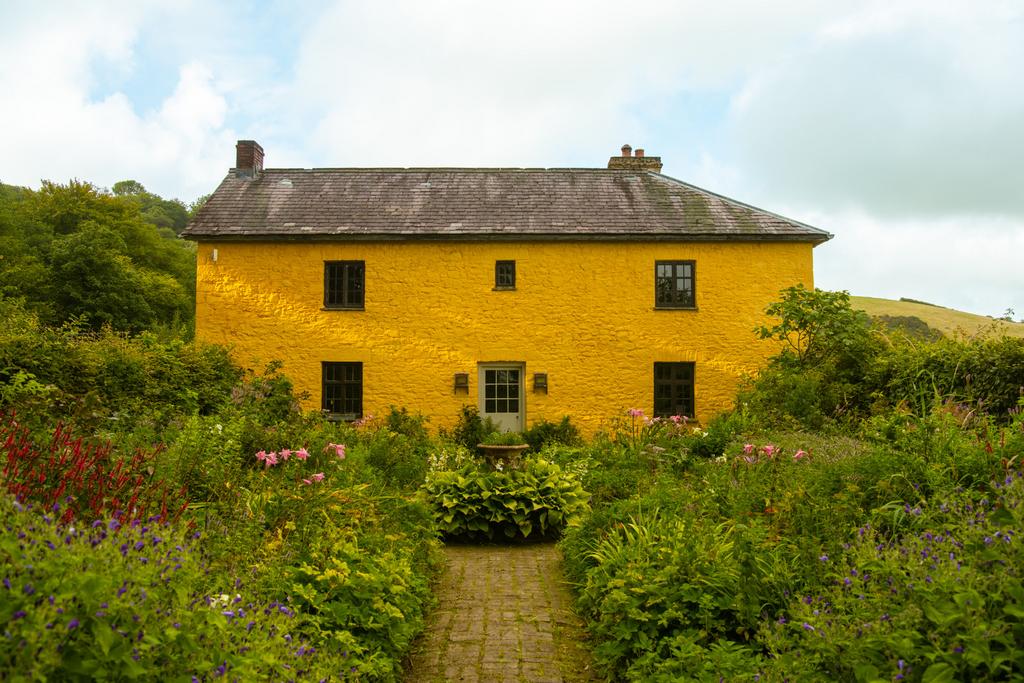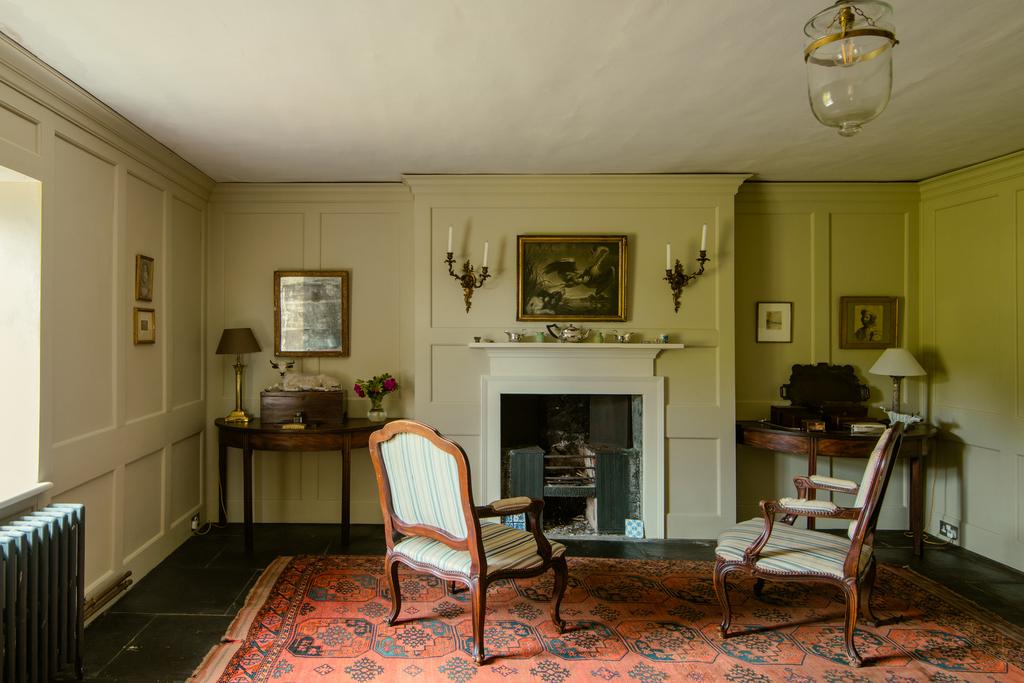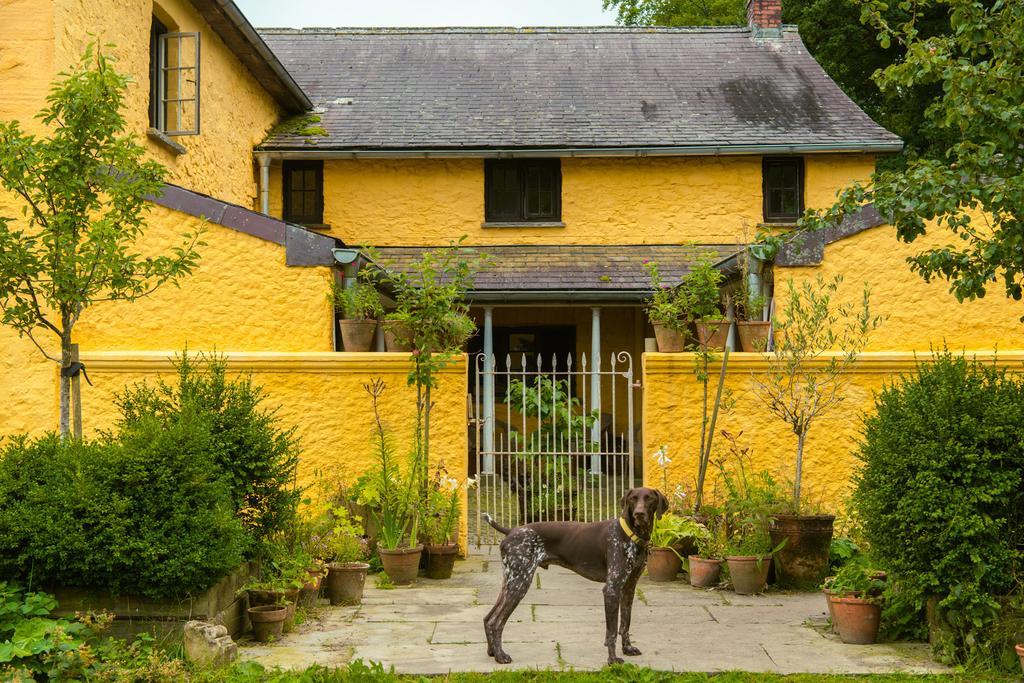


4 bedroom detached house for sale
Key information
Property description & features
- Tenure: Freehold
Setting the Scene
This pocket of the West Wales countryside is exceptionally unspoilt. Crisscrossed with ancient footpaths, Bronze Age barrows and Iron Age earthworks, the hills and valleys are steeped in an ancient sense of the landscape. Unaffected by mining in the 18th and 19th centuries unlike surrounding areas, it has remained largely agrarian since its earliest settlement. Likely built on part of the footprint of an early Welsh longhouse, the house was remodelled and extended in the 18th century, resulting in much of the genteel façade we see today. Subtle expert modern interventions have enhanced the house’s charm, with the potential for further development in place. For more information, please see the History section below.
The Grand Tour
The approach to the house is via a country lane lined with oaks, along an ancient farm track that rises gently into the surrounding hills. Framed by age-old woodland, the striking yellow ochre limewash façade comes into view. The house and barns are nestled on the lower rises of the Mynydd Figyn, one of the many hills that make up the lower Cambrian range which forms the backbone of much of West Wales.
Entry is through a period wrought iron gate, where a sheltered courtyard with a porch veranda along three sides is cobbled with stones from the river. Designed and implemented by the current owner, the reorienting of the 18th-century house provides a wonderful indoor/outdoor space.
A half-glazed timber door leads inside to the spacious country kitchen. Warmed by a cream Aga, the kitchen has been carefully conceived to mesh seamlessly with the period pedigree of the original structure. Flagstones stretch out underfoot and the lime-plastered walls have been washed in neutral tones. A period stone sink with reclaimed brass taps sits atop a modern dishwasher, bringing together new and old. Windows along three sides flood the room with natural light.
A dining room lies beyond, within the footprint of the earliest part of the house. A fireplace with vestiges of the 19th-century cast-iron range still centres the room. Well-worn original flags line the floor and a deep-set casement window with early hand blown glass frames incredible views of the surrounding hills. There is a door to the central courtyard for breezy access in warmer months.
Through a door to the right of the hearth is a passage leading on to the dairy and stairs to the first floor. Cleverly conceived, the walk-in larder dairy has been constructed as a large food store with slate shelves and flagstone floor. Shelf brackets have been carefully re-created following the original design of the old kitchen mantlepiece. Virtually indiscernible from the fabric of the original house, the current owner’s intuitive understanding of period houses has revitalised this space.
On the south side of the house is a pretty sitting room with a large, open hearth, most likely in what was the original 18th-century kitchen. The room is airy and light with views of the stunningly planted front garden from one side and distant hills in the other. Wide oak floorboards run underfoot and lime plaster, as with much of the ground floor, is washed in neutral, creamy tones.
A more formal hall lies beyond, with striking black and red quarry tiles in a chequerboard pattern. Plank panelling with an under-stair door painted in traditional grey-green tones provides storage for plenty of coats. There is also room here for a bench, to kick off muddy footwear after a walk in the surrounding countryside.
The music room is across the hall. Here, panelling is painted in ‘Coachella’ by Craig and Rose and provides extra insulation, both acoustic and thermal. Dark slate flooring underneath contrasts with the walls, while a deep, original window overlooks the mature front garden. A handsome cast-iron hob grate completes the room’s gentle air of Georgian refinement.
Ascending the front staircase, two large bedrooms are reached, arranged at either side of a central landing. The green bedroom has generous proportions and is painted in a vibrant leafy-toned traditional chalk soft distemper, made to match historic paint samples found under layers of ancient wallpaper in this room. The original period cast-iron hob grate sits within a vernacular fire surround. An en suite with an early cast-iron reclaimed bath has a perfectly placed window for woodland views during a relaxing soak, and a lead toilet cistern was sourced from Laycock Abbey.
The duck-egg bedroom lies across the hall. Painted in a traditional chalk soft distemper in an elegant shade of blue, the bedroom looks to the front garden and has interconnecting doors to a pink bedroom beyond.
Accessed via the back stairs, a first-floor corridor is lined with a built-in linen press and has ample storage and a laundry-drying cupboard. From here is a pretty bedroom washed in madder pink lime paint with spectacular views.
The primary bedroom is at the rear of the plan. Panelled and painted in restful tones of deep blue, this bedroom is part of the newer addition to the house expertly integrated by the current owner. A thoughtfully designed cabinet along one wall contains a perfectly compact en suite shower room.
A further bathroom is down the hall that also houses a reclaimed cast-iron bath and a second lead cistern from Laycock Abbey. Views from the window above the bath look across barn roofs to the woodland beyond; when left open, the stream in the valley below can be heard.
The Great Outdoors
Mature gardens fan out around the house. A formal plan is laid out towards the front in a quadripartite arrangement with rustic brick paths. Borders chock-full of herbaceous perennials thrive among their hardy neighbours, creating a riot of colour and texture – a haven for bees and other pollinating insects.
Wide stone and brick paving immediately along the front south-facing façade is the perfect space to enjoy a sunny day. The current owner has created a central courtyard with verandas to the rear of the plan that allows for outdoor living even on the rainiest of days. A large stone sink with hot and cold taps here has a variety of uses, from potting plants and arranging flowers to cleaning off muddy dogs.
Outside the courtyard, a large farmyard provides ample parking and access for the house and barn. The recent addition of a wood-fired bread oven here has set the scene for many a pizza evening. Up a short flight of stairs, set into the long range of woodshed and outbuildings, is a kitchen garden planted with soft fruit, asparagus and rhubarb. Rising further up the slope, there is a thriving orchard made up of apples, pears, medlars and walnuts, both old varietals and newer additions. The fields and woodland surrounding the house support a complex natural ecosystem and are home to rare and listed plants and insects.
There is also a range of interconnected 18th and 19th-century stone barns (with their origins described in greater detail in the History section) with electricity and water supplies and dedicated soil systems for potential conversion to residential accommodation.
The land around the house stretches to around 12 acres. There is a further 15 acres available by separate negotiation.
Out and About
The landscape is a blend of valleys rising to windswept Rhos uplands. Around 3,000 years ago, a significant clearing of woodland made way for the variety of rough grasslands, pastures, ancient hedgerows, and planted forests which have created a flourishing ecosystem and breathtaking scenery to boot.
Past the scattering of idyllic farms and hamlets, it is a 17-minute drive to Llandeilo, a town famed for its brightly coloured houses and outstanding collection of boutiques, bookshops, and cafes. It is the birthplace of the prominent brand, Toast, and their flagship shop lives on in town. Davies & Co. is an award-winning interior design shop and café, packed with a wonderful range of traditional Welsh blankets and other home furnishings. Pitchford & Provision began as a craft bakery and has expanded as a deli with delicious gourmet produce.
The 12th-century Dinefwr Castle is located on the edge of the town; from its hilltop are panoramic views of the valley below. Further afield, the beautiful coastlines of Cardigan Bay and Pembrokeshire are approximately an hour’s drive, offering a host of wild and unpopulated beaches with excellent surfing and sea kayaking. In the opposite direction lies the Brecon Beacons AONB.
The bustling cities of Cardiff and Newport are just under 2 hours away by car, with a rich array of cultural offerings. Llandeilo Station is an 18-minute drive away and offers train connections with London or Manchester in around four and a half hours and Bristol in three and a half.
Council Tax Band: E
Places of interest
See more properties like this:
*DISCLAIMER
Property reference TMH81287. The information displayed about this property comprises a property advertisement. OnTheMarket.com makes no warranty as to the accuracy or completeness of the advertisement or any linked or associated information, and OnTheMarket.com has no control over the content provided by the agent or developer. This property advertisement does not constitute property particulars. The information is provided and maintained by Inigo - London.
OnTheMarket may have applied supplementary data to this property listing, including:
Broadband availability and predicted speed
Broadband speed is measured in megabits per second, with the number returned showing how fast the connection is. Each reading is based on the highest predicted speed of any major broadband network for services that deliver the download speeds. The following are the different readings that we may display:
Basic: Up to 30 Mbit/s
Super-fast: Between 30 Mbit/s and 300 Mbit/s
Ultra-fast: Over 300 Mbit/s
The data is updated three times a year. The checker results are predictions and should not be regarded as guaranteed. For more information, see: https://checker.ofcom.org.uk/en-gb/about-checker#Answer_0_2
Mobile phone signal availability and predicted strength
Mobile signal predictions are provided by the four UK mobile network operators: EE, O2, Three and Vodafone. Predictions can vary significantly from the coverage you may actually experience as a result of local factors (especially terrain). Ofcom has tested the actual coverage provided in various locations around the UK to help ensure that these predictions are reasonable. The values shown against a property can be broken down as follows:
Clear: No bars, no signal predicted
Red: One bar, reliable signal unlikely
Amber: Two bars, may experience problems with connectivity
Green: Three bars, likely to have good coverage and receive a data rate to support basic web services
Enhanced: Full bars, likely to have good coverage indoors and to receive an enhanced data rate to support multimedia services
Energy Performance data and Internal floor area
Any supplementary data should not be relied upon as forming part of any property particulars and OnTheMarket cannot be held responsible for any incorrectness in this data. See here for more information.
